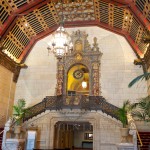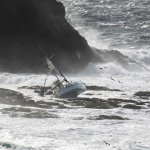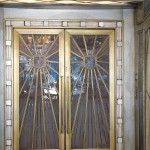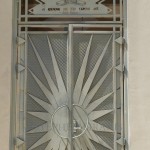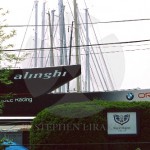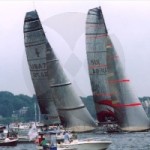This if it works as advertised, is a huge step forward in search and rescue.
Category: lirakis safety harness
FARALLONES REPORT AND OTHER THINGS
The long awaited Farallones report is issued from US Sailing: READ HERE.
US Sailing’s report on the “Low Speed Chase” accident has been issued and it is a solid study. Read it and draw your own conclusions.
The rest of the photographs are my continuing exploration of downtown Los Angeles. So many tell me that there is no architecture in Los Angeles and no culture; that it is a completely hedonistic place. While it is probably true that the film industry and the stars dominate the headlines; there is the larger life of the vast majority of people alongside.
BERMUDA RACE SAFETY AT SEA
The Bermuda race starts in 5 days. And we are all conscious of safety at sea. The following is copied from scuttlebutt.
STAYING OUT TROUBLE
Randy Smith is old enough. Old enough to know how to play the sailing game at a high level, and old enough to know that it is only a game. Here Randy reflects on how he stays out of trouble when heading offshore…
———————————————————————-
I have grown up sailing, cruising, racing and delivering boats up and down the California and Mexican coastlines, along with racing to Hawaii numerous times. Even on my early trips as a kid with my parents on the family Cal 29, we encountered ships on the way to Catalina Island. I was always taught by my dad to know where the shipping lanes were on the chart and what VHF Channel 16 was for.
Fast forward 40 years, experience has made me a huge proponent of safety procedures: talking about them, practicing for them, writing down notes and most importantly, asking the questions that nobody wants to hear. Having everyone on board know how to use the GPS in an MOB situation, how to start the engine, where the ditch bag is, where the flares are, how to light one off, etc. People who I have sailed with know that I have become a bit of a fanatic in this regard, sort of a safety nerd. But the good news is, it is starting to become cool to be a nerd. Just like the movie Revenge of the Nerds.
With regard to protocol on commercial traffic, it is simple. The watch captain on deck has the ultimate responsibility to keep track of the surroundings. Ships are quite easy to see in day or night, and if you don’t have people on board with the knowledge of what a ship looks like in all conditions, you probably shouldn’t be out there.
I have sailed on boats with and without AIS (Automatic Identification System). For offshore and coastal racing, my experience with AIS is the same as radar. AIS is a very nice convenience, but we usually use it to confirm what we are already seeing with our eyes.
I have had some interesting close calls, including a large aircraft carrier off San Clemente Island, oil tankers in the shipping lane between Anacapa Island and Santa Barbara, and even large unlit commercial fishing vessels in Mexico with very confusing lights. Even in last year’s Transpac Race, we encountered a very large container ship coming up from astern at a steady collision course bearing. We heated up our course by 15 degrees well in advance, and it was as if he was trying to get close to us just to see us. When they were within 1/2 mile or so, they hit us with a giant spotlight and then turned right by about 45 degrees. Our next step would have been to call on VHF 16 and ask “WTF?”
When in doubt, we immediately get on the radio and/or make a course alteration to make our intentions obvious to the ship. In the event of fog, we would immediately deploy our radar reflector if not already rigged. I really cannot imagine a scenario where you could not see a large ship coming in day or night.
As always, most races are won and most tragedies are avoided before the boat ever leaves the dock. Attention to detail and confirmation that EVERY crewmember on board has an understanding of the following items seems to be the most sure fire way to interact with commercial shipping traffic and problems:
– Keep a diligent watch at all times.
– Upon sighting a ship, confirm changes in range and bearing or if bearing is not changing and too close. Determine what action is necessary.
– If AIS equipped, confirm with navigator the data on the ship.
– Without AIS, call on VHF 16 sooner rather than later.
– If a gybe or sail change will be required to avoid, get the off-watch up early to be prepared.
– Empower EVERY crewmember on the boat to know how to use the tools you have and establish a clear line of communication.
– Most importantly, remember this is just a sailboat race. Getting too close to a ship or land to make a small gain is just not worth it.
– If you sail with new people or on a new boat, confirm the level of experience and knowledge. Ask questions… your life could depend on it.
– When joining a new team, BE A NERD. Bring a higher level of knowledge, safety and seamanship to the team. They will appreciate you.
ANOTHER PIECE OF THE PUZZLE
May 9, 2012 – Coronado Islands
 Theo Mavromatis’s body was discovered this weekend by fishermen. Photo Courtesy Aegean © 2012 Latitude 38 Publishing, LLC |
The San Diego County coroner has identified a body found by Southern California fishermen on Sunday as that of Theo Mavromatis, the skipper of the doomed Hunter 376 Aegean. Mavromatis (49) and crew Kevin Rudolph (53), William Johnson (57), and Joseph Stewart (64) were racing in the cruising division of the Lexus Newport to Ensenada Race on April 28 when their SPOT tracker suddenly stopped transmitting in the early morning hours. Wreckage from the boat was discovered the next afternoon, along with the bodies of three of her crewmembers. According to the medical examiner, everyone aboard sustained blunt force trauma to their heads, with Mavromatis, Rudolph and Johnson dying from their injuries and Stewart drowning after receiving the injuries.
From the boat’s track, it looks as if Aegean was moving at a steady pace in light winds — indicating it was motoring – when it appears to have run into the northernmost Coronado Island, but many still hold to the theory that Aegean was run down by a freighter in the night. The Coast Guard has yet to announce the findings of their investigation, but Lt. Bill Fitzgerald of USCG Sector San Diego indicated that the evidence is definitely leading them in a particular direction.
– latitude / ladonna
I AM CONFUSED
Images from the last “America’s Cup” visit to Newport when lead mines were still in fashion.
The reports of the tragedy of “AEGEAN” remains a puzzle for me. Could the 37 foot hunter yacht have been destroyed in the manner described by hitting coronado island? Then have the debris field float against the current to be discovered?
Was the boat hit by a ship as first reported and the transponder then continue to send a signal until it landed on the island?
As usual everyone has opinion, which has been formed without all of the facts. How often have we seen that happen in life?
NEW STORY
So all the stories I posted have been just that; stories. As is often the case, speaking out before all the information is in. The conversation has just taken an abrupt change of direction.
what happened
.png_sml.png)
The tracker doesn’t lie: The Hunter 37 Aegean, which was feared to have been run over by a large commercial vessel during the Newport to Ensenada race, actually ran aground on the North Coronado Island, killing four crew members. A nasty bit of rock, and with the decent sized swell running during the race, it is not hard to imagine the sort of carnage rendered, at least to the boat. We still aren’t sure how the hell they ended up there though… Click here to expand on the track.
05/01/12
CASE IN POINT
Here is an excerpt from a posting by PUMA, currently sailing up the coast of Brazil finishing in Miami. It is a little ironic given what has been the sailing headlines in recent times here in the United States.
Early yesterday evening our course took us directly across the transom of a tiny wooden fishing boat, anchored no less than 50 miles from shore, and as we went by waving hello to four surprised locals at 18 knots, it’s impossible not to wonder if our new spectators have any comprehension of what they’ve witnessed. They have likely never laid eyes on a boat like ours, and likely never will again. A giant black jumping cat emblazoned on a tentacle-covered sailboat, a fast sailboat, faster than many powerboats. It must be bizarre but exhilarating, if only for a brief moment before we’re gone again, like a mysterious UFO just passing through.
Looking back on the six prior legs of this race, I wonder if the countless mariners we randomly intersect, lives we intermittently traverse in the middle of the worlds ocean: what did they do when they returned to land? Are they new PUMA Ocean Racing Facebook fans? Are they reading this update, avid followers of our plight like the sailors of the ZIM MONACO? Did they Instagram a photo of us from their fancy smart phone? Or not. Are we just an intense flash of a story on an otherwise typical workday for some seafarer that knows nothing of Volvo cars, PUMA clothing, carbon fiber, or the World Wide Web?
There was the ship of long liners off Sri Lanka, forcing us into a hard preventative bear away and a close race mark like rounding (I don’t know what was more impressive, the stench from their hold or Tony’s reaction on the helm). There were the countless unlit dinghies in the Malacca Straits, clueless as to the danger a night in our path could present. There was the teeming port of Singapore; an evening spent dodging and weaving through hundreds (maybe thousands) of anchored 300-meter ships. There were the fishing boats off Japan and the fishing boats off the Solomons. There was the fleet of halogen-lit squidders near Chile and then the busy trans-South Atlantic shipping lanes, the very one that brought us to our ZIM MONACO friends and eventual Tristan salvation.
THE STORY
I had some pretty pictures to post but this is a thread that should continue
Newport Ocean Sailing Association (NOSA) officials learned late Saturday that three sailors in their Newport to Ensenada offshore race had died in an apparent collision with a large vessel several miles off the coast near the border.
The 37-foot Aegean was reduced to debris that looked “like it had gone through a blender,” a searcher said Sunday after the boat apparently collided with a larger vessel, killing three sailors and leaving a fourth missing. The U.S. Coast Guard, the Mexican navy and civilian vessels scoured the waters off the shore of both countries for the missing sailor before suspending their search Sunday evening. It was California’s second deadly accident this month involving an ocean race.
Race officials said they had few explanations for what may have happened to the Aegean other than it must have collided with a ship like a freighter or tanker that did not see the smaller vessel.
If the smaller boat was bobbing around in light wind, the crew might not have been able to get out of the way of a larger ship, said Rich Roberts, a spokesman for the Newport Ocean Sailing Association, the race organizer. The race goes through shipping lanes and it’s possible for a large ship to hit a sailboat and not even know it, especially at night, Roberts said.
The Coast Guard said conditions were fine for sailing, with good visibility and moderate ocean swells of 6-to-8 feet. Officials had not yet determined the cause of the accident, and would not speculate late Sunday on what ship, if any, might have collided with the sailboat. A race tracking system indicated the Aegean disappeared about 1:30 a.m. PDT (4:30 a.m. EDT) Saturday, he added.
Other yachts near the Coronado Islands in Mexico — four small, mostly uninhabited islands — reported seeing debris Saturday morning. Two of the dead were William Reed Johnson Jr., 57, of Torrance, Calif., and Joseph Lester Stewart, 64, of Bradenton, Fla. The San Diego County Medical Examiner’s office was withholding the name of the third sailor pending notification of relatives. Calls to Johnson’s and Stewart’s homes went unanswered Sunday.
The Aegean is registered to Theo Mavromatis, 49, of Redondo Beach, Calif. The race association didn’t know if he was aboard, but Gary Gilpin at Marina Sailing, which rents out the Aegean when Mavromatis isn’t using it, said the 49-year-old skipper took the yacht out earlier in the week for the competition. Gilpin said Mavromatis, an engineer, was an experienced sailor who had won the Newport to Ensenada race in the past. A woman answering a call at a number listed for Mavromatis declined to answer questions.
Eric Lamb was the first to find debris of the boat — most no larger than six inches — scattered over about two square miles Saturday as he worked safety patrol on the race. He saw a small refrigerator, a white seat cushion and empty containers of yogurt and soy milk. “We pulled a lot of boats off the rocks over the years and boats that hit the rocks, they don’t look like that. This was almost like it had gone through a blender,” said Lamb, 62.
A Coast Guard helicopter circling overhead directed him and a partner to two floating bodies. Both had severe cuts and bruises, and one of them had major head trauma. Two race participants who were in the area at the time the Aegean disappeared said they saw or heard a freighter. Cindy Arosteguy of Oxnard, Calif., remembers hearing on her radio someone say, “Do you see us?” as she saw a tanker about a half-mile away. “I got back on the radio and said, ‘Yes, I see you,'” she said. “It was definitely a freighter.”
In Ensenada, several hundred people held a minute of silence for the victims at an awards ceremony that spilled out in a courtyard from a large white canopy at a hotel that served as race headquarters. Chuck Iverson, commodore of the sailing association, said in an interview that the collision was a “fluke,” noting how common night races are along Mexico’s Baja California coast. “We’re all shocked by this whole event,” he said. The deaths are the first fatalities in the race’s 65 years, the sponsor said. Racing boats are required to use lights at night, Iverson said, although the boats are not inspected unless a competitor suspects a problem and tells race officials. The race attracts sailors of all skills, including some who are new to long distances. “You get world-class sailors and you get first-timers. That’s the good thing about it. … It’s kind of a safety-in-numbers thing,” said Lamb, who has worked safety patrol for eight years.
The Newport Beach Patch website posted a photo of the Aegean’s crew at the start of the race Friday. Four men in royal blue T-shirts are on the deck as the boat cuts through calm waters. A total of 213 boats were registered, and the winner, Robert Lane of Long Beach Yacht Club, finished Saturday in 23 hours, 26 minutes, 40 seconds. A small crowd gathered in the morning fog at an Ensenada marina to watch the remaining boats finish Sunday morning. A notice tacked to a bulletin board alongside the racing times informed spectators of the tragedy.
The deaths come two weeks after five sailors died in the waters off Northern California when their 38-foot yacht was hit by powerful waves, smashed into rocks and capsized during a race. Three sailors survived the wreck and the body of another was quickly recovered. Four remained missing until one body was recovered Thursday.
The accident near the Farallon Islands, about 27 miles west of San Francisco, prompted the Coast Guard to temporarily stop races in ocean waters outside San Francisco Bay. The Coast Guard said the suspension will allow it and the offshore racing community to study the accident and race procedures to determine whether changes are needed to improve safety. U.S. Sailing, the governing body of yacht racing, is leading the safety review, which is expected to be completed within the next month.
In 1979, a freak storm in the Irish Sea led to the deaths of 15 sailors in the Fastnet Race. In the 1998 Sydney to Hobart Race off Australia, a storm with hurricane-force winds struck the fleet in the Bass Strait, sinking several boats and killing six sailors.
Gary Jobson, president of the U.S. Sailing Association, said there have been too many accidents during races in the past year, and that the association is working to make the sport safer. “I’m horrified. I’ve done a lot of sailboat racing and I’ve hit logs in the water, and I’ve seen a man go overboard, but this takes the whole thing to a new level,” Jobson said. “We need to take a step back and take a deep breath with what we’re doing. Something is going wrong here.” Jobson said U.S. Sailing will appoint an independent panel to investigate the Ensenada incident, as it has done in the Farallon Islands accident. Article thanks to the Associated Press.
ANOTHER TRAGEDY
Only a few days ago, I was having lunch with some friends and the “Low speed chase” tragedy filtered into the conversation. He stated that t seemed almost inevitable that something bad would happen during the Bermuda Race. Great efforts are made to assure all participant’s safety.
He expressed the desire to see a panel convened to review and perhaps set new standards for safety at sea before another tragedy. It seems as though time has accelerated.
I suggested that there was no need to re-invent the wheel. The RYA yachtsman courses (in England) has a program set up in several levels and could provide a very good template.
Perhaps now is a good time to start before legislation that may be a knee jerk reaction and containing unintended consequences is proposed.
I have participated in a number of courses both here and in England. The courses are improving all the time. A little story about one of these courses may illustrate a problem that cannot be legislated. I was in a pool with my assigned group having just inflated our life raft. The goal of our exercise was to make sure our team was safe. One of our team was incapable of getting into the raft. I organized for the strongest of our group to help the team member into the raft while I acted as a counterbalanced the raft. We could not get the individual into the raft no matter what we did and remember we are in a swimming pool.
I have often been faced with decisions with rather or not to sail on certain boats and there are times when I have declined to sail on a boat for one reason or another; the condition of the boat, predicted weather, who comprised the crew.
death, again
Newport Ocean Sailing Association (NOSA) officials learned late Saturday that three sailors in their Newport to Ensenada offshore race had died in an apparent collision with a large vessel several miles off the coast near the border.
Theo Mavromatis is the owner and skipper of the sailboat Aegean, a Hunter 376 representing the Little Ships Fleet club, but it was not known if he was one of the victims. A U.S. Coast Guard helicopter led Vessel Assist to two bodies and later retrieved another. None of the bodies had been identified. A crew list was not immediately available, nor was it known how many other crew may have been on the boat, which is usually sailed by five or more persons.
The first indication of the incident was at 1:30 a.m. Saturday when the boat’s image vanished from the online race tracking system in place for the race. A Coast Guard search was launched that led to discovery of the boat’s wreckage, including the rear transom with the boat’s name on it.
An investigation was continuing, but it appeared the damage was not inflicted by an explosion but by a collision with a ship much larger than the 37-foot vessel.
The race started off Newport Beach in mid-day Friday and many boats finished in Ensenada Saturday, with the last ones due in Sunday. Weather conditions were lighter than normal at the time and place of the incident, with boats reporting winds of only 1 or 2 knots.
These would be the first fatalities in the 65-year history of the race, in which as many as 675 boats have competed in 1983 and 213 were entered this year. Discussion here.
HARD LESSONS “LOW SPEED CHASE”
This conversation is not over. I am certain many of you have your own opinions as to what happened, what should have happened and what should be done about it.
Amidst the terrible grief of our friends in San Francisco over the loss of five crew of Low Speed Chase comes the inevitable overreaction from the government and investigation by self-proclaimed experts. A boat is rolled in big surf and it’s time to ban racing outside the Gate for two months? When’s the last time fishing was banned when some johnboat was blown out to sea and lost? Loss of life is horrible, but even worse is loss of freedom. None of the dead would have wanted that, and we hope the folks at the USCG and US Sailing remember that. Anarchist “keel haulin” wrote maybe the most difficult analysis of this matter we have seen yet, but it rings true…from the “Wide Open Discussion” thread. Also, take the time to learn more about what happens to big waveswhen they come to shore.
 I don’t post on this forum often; but I see lots of argument about whether Low Speed Chase was too close, and what should have been done, what equipment should be worn, etc. I’m going to go on the record here and say that everything I have read and seen about where boats were on the Crewed Farallones tells me that ALL of the boats that transited the area were in too close and that LSC got caught in a large set. I hate to burst bubbles about what people think is safe, but I think this tragedy should burst a few; and hopefully the skippers who go racing there next time will consider what I am going to say here before they also decide to round the windward side of SE Farallone two to three waves away from the break.
I don’t post on this forum often; but I see lots of argument about whether Low Speed Chase was too close, and what should have been done, what equipment should be worn, etc. I’m going to go on the record here and say that everything I have read and seen about where boats were on the Crewed Farallones tells me that ALL of the boats that transited the area were in too close and that LSC got caught in a large set. I hate to burst bubbles about what people think is safe, but I think this tragedy should burst a few; and hopefully the skippers who go racing there next time will consider what I am going to say here before they also decide to round the windward side of SE Farallone two to three waves away from the break.
I’m going to say this once. It is the responsibility of the skipper of a vessel to ensure the safety of the vessel and her crew. Regardless of what happens; or how it happens. It makes little difference if the wave was ‘freak’ or larger than average. It is still the responsibility of the skipper to ask himself “WHAT IF”. With regard to the LSC tragedy; the WHAT IF should have been asked about the possibility of ANY FAILURE or sea condition that would put the boat into the danger zone. This question was not asked by the LSC skipper AND THE BOATS HE WAS FOLLOWING. Everyone else got lucky that a big set did not arrive and smash them into the shore.
The NW end of SE Farallone is a reef. Anything 10 fathoms or less is “reef depth” and a potential break zone. The topology of the break zone is similar to the Mavericks reef. On days when there are large seas; this area would look like a big day at Mavericks. If the seas are 12-15 feet, large sets of waves that are 20-25 feet should be expected. In normal offshore sailing conditions these swells are noticed but not dangerous. When they run up onto a reef (a shallowing zone) they turn into 30-40′ monsters. They break much further out than the ‘normal’ break zone. These waves are not uncommon and they are not to be ‘unexpected’. Based on photos and looking at charts; being 125 yards outside of the break zone would put the LSC and other transiting boats in a depth of 30-40 feet. It’s too close to a lee shore/reef with large breakers. I’m sorry but that’s just the way it is. Mistakes were made by the skippers who sailed through the area in those conditions. We all need to accept it and learn from it; and stop bickering about what people don’t want to accept (that the skippers who sailed through that reef were all doing the wrong thing).
Waves of this magnitude put all bets off in terms of survivability on the boat, tethered on, or off. The three that survived were lucky. Everyone onboard were in grave danger before the wave broke. In a breaking surf wave, jacklines, tethers, and harnesses, will snap like weak rubber bands. They are not designed to withstand these types of loads. If they did stand up to it the forces on the human body would be deadly. While I agree that staying onboard is paramount to crew safety (“don’t fall off the boat”); there is another cardinal rule that supersedes it. It’s “give lee shores a wide berth”. If that had been done we would not be talking about what the sailors should be wearing. If change is to come from this (and it should) it should be for a call from within the racing community for racecourse laylines/waypoints or off-limits depth contours.
I’m pretty sure the USCG suspended racing so the racing organizations can get their shit together and come up with some ‘lessons learned’ mitigation for this tragedy; so that public outcry can be tamed. Otherwise expect the USCG to be up everyone’s ass who goes racing; especially racers going outside of the bay.

